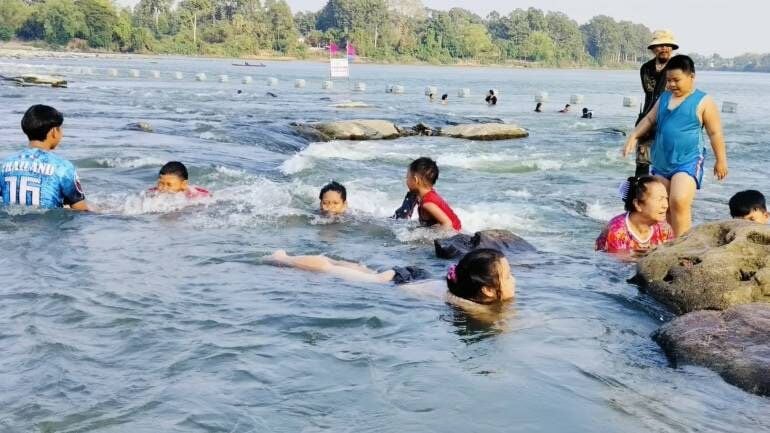Water crisis hits Koh Pha Ngan and Koh Samui, tap water rationed

On Koh Pha Ngan, a water crisis since late March has led to a stringent rationing of tap water which affected both locals and tourists.
The rationing, operating on a rotational basis, leaves some areas parched on certain days while others savour the flow. A meagre 3,500m3 to 4,000m3 of water trickles through the pipes daily, barely meeting the island’s thirst.
With its lifelines strained, Pha Ngan Island relies on two reservoirs, boasting a combined capacity of 740,000m3, and a reverse osmosis water plant, churning out a modest 600m3 of potable water daily from the salty embrace of the sea.
Yet, the parched plight doesn’t end there. Across the glistening straits, Samui Island shivers under the shadow of a similar drought, threatening the hospitality hub’s promise of 2.4 million tourist arrivals this year.
Privately operated water trucks trundle across the island, ferrying precious cargo to thirsty hotels perched on elevated grounds, beyond the reach of the dwindling tap supply. The cost burden trickles down to hoteliers, swelling their operational expenses and leaving them high and dry compared to their counterparts elsewhere.
Ratchaporn Poonsawat from Koh Samui Tourism Promotion Association laments the dearth of sustainable solutions. He warns that unless the government addresses the issue with foresight, the very allure of investment in island tourism may evaporate like morning mist.
Meanwhile, on Samui Island, three main water sources, the wetlands of Phru Krajood, Phru Na Muang, and Phru Chaweng, store a modest total of 3,200,000m3, barely sufficient to quench the island’s growing thirst.
A lifeline emerges from the mainland, as a modest flow of 22,000m3 per day trickles through an undersea pipeline from Surat Thani, swelling by an additional 5,000m3 during the parched embrace of the dry season.
In the northeastern province of Ubon Ratchathani, the Pak Mun Dam offers a watery spectacle during the Songkran festival. As the floodgates open, the Kaeng Saphue rapids, long submerged beneath the dam’s embrace, resurface in a jubilant splash, reported Thai PBS World.
Yet, as the waters surge, Governor Suphasit Korcharoenyot issues a cautious plea. The flood must be tempered, and monitored, lest it swell beyond 200,000,000m3, a precarious waste at the cusp of the dry season.
Latest Thailand News
Follow The Thaiger on Google News:


























